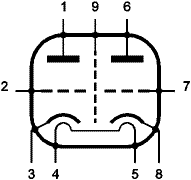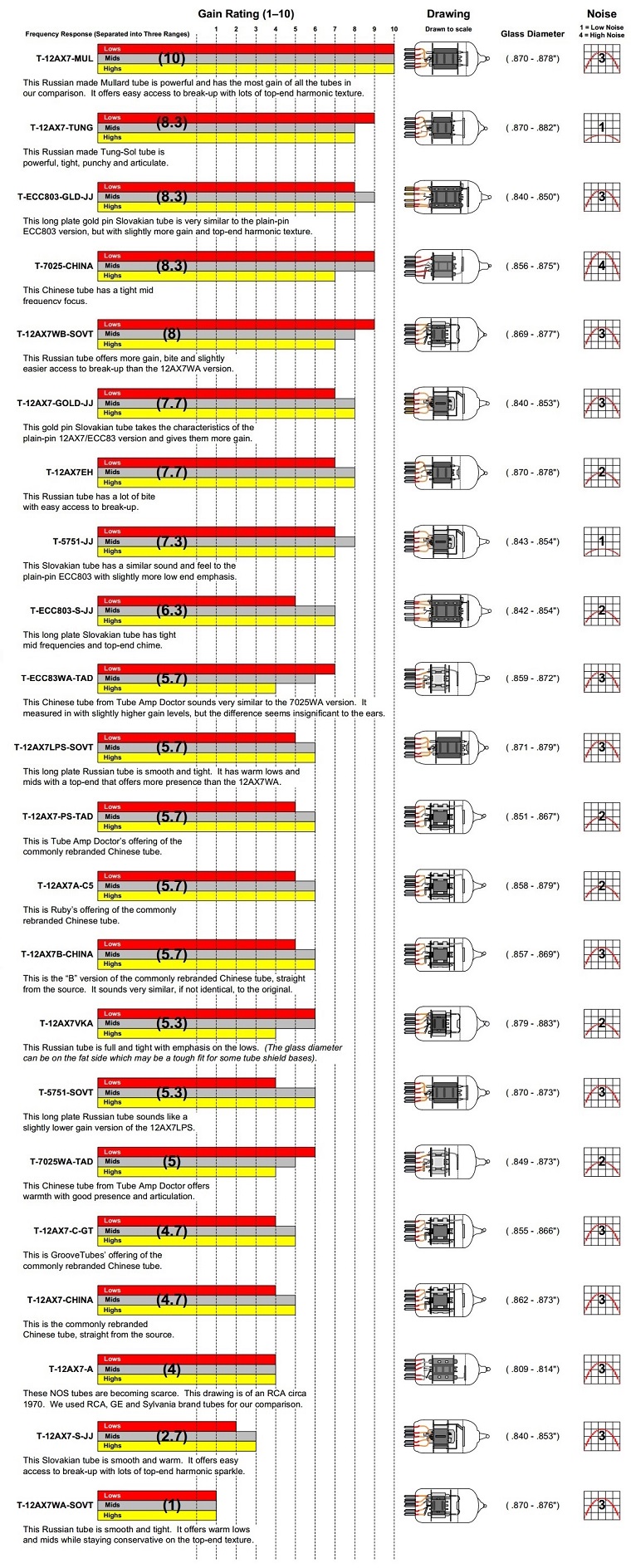Lake Placid Green
Tele-Meister
It gets confusing when trying to figure out what I want to put in my amp. It's not just a 12ax7, there are like 8 different kinds.
Not a lot.
7025 is the hifi low noise hum version of the 12ax7
http://www.tubebooks.org/tubedata/HB-3/Receiving_Tubes_Part_2/7025.PDF
12ax7wa is the milspec version
https://frank.pocnet.net/sheets/127/1/12AX7WA.pdf
here is a data sheet for the 12ax7a:
https://frank.pocnet.net/sheets/127/1/12AX7A.pdf
the wb version seems to be a sovtek invention I can't find a data sheet for it
they say it higher gain, easier to distort, has a low end bump but then "they" say a lot of things
You only need to put them in wring down v1- on v2 and roll the tubes around , v1 closest too the input instrument jack has the most effect on the overall eq and tone.It gets confusing when trying to figure out what I want to put in my amp. It's not just a 12ax7, there are like 8 different kinds.


It gets confusing when trying to figure out what I want to put in my amp. It's not just a 12ax7, there are like 8 different kinds.
